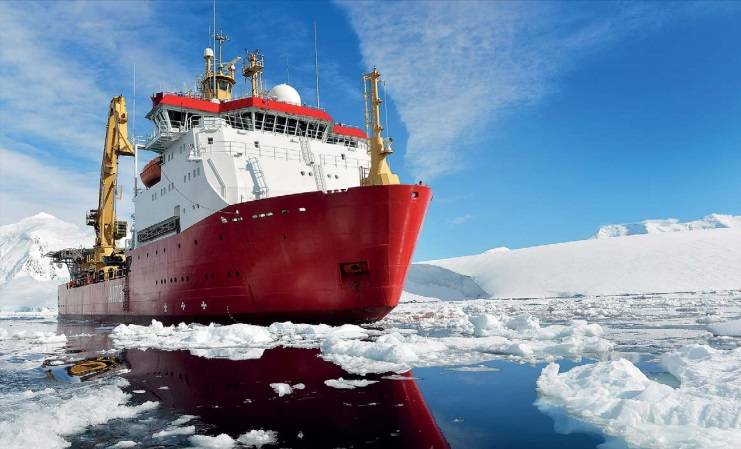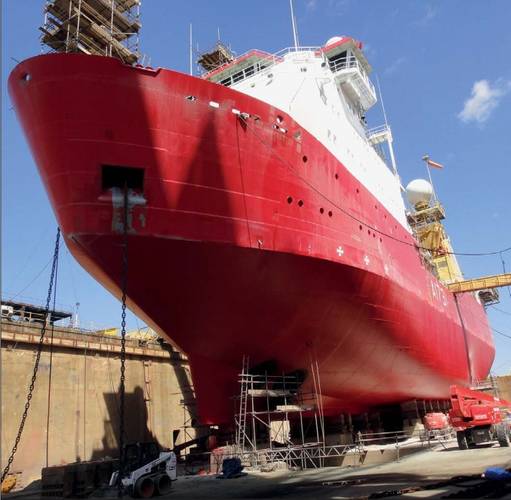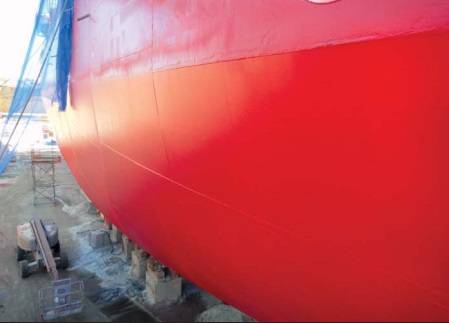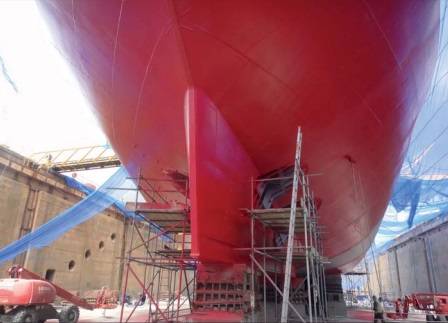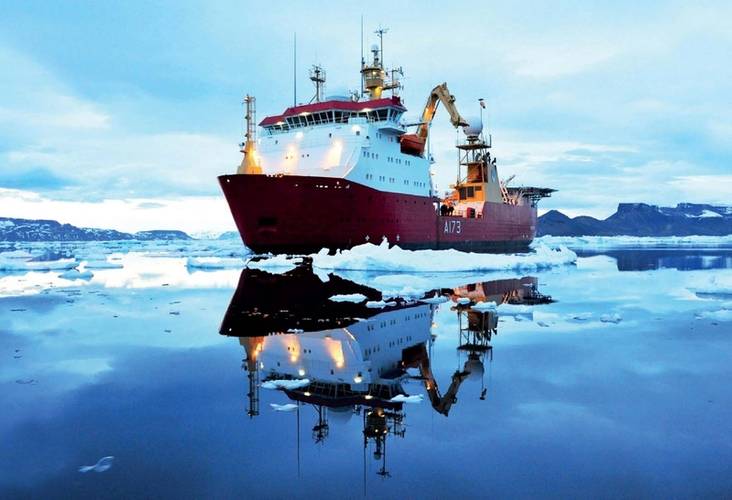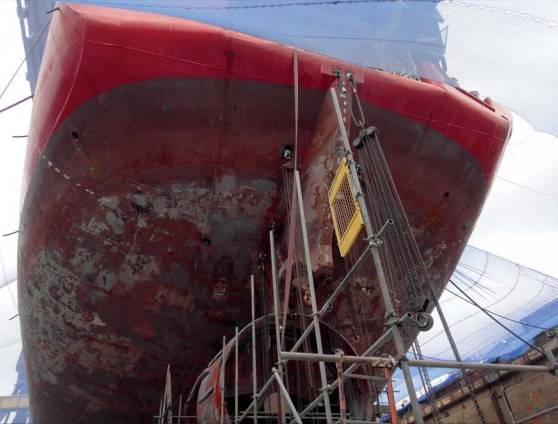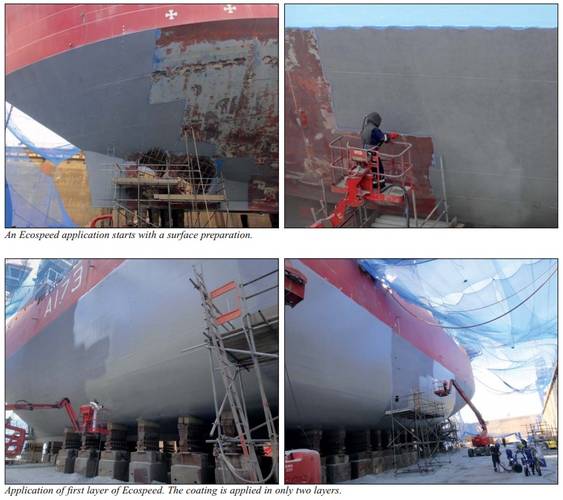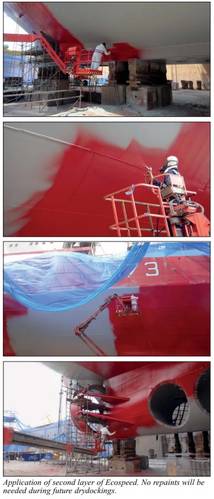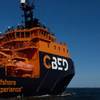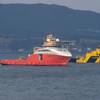U.K. Royal Navy Ice Patrol Ship HMS Protector is deployed on operations for 330 days a year, mostly in the Antarctic region, making it essential that her underwater hull is protected against the harsh icy conditions she faces.
At the end of May, HMS Protector was coated with Ecospeed at the A&P Tyne Ltd. Shipyard in Tyne and Wear, U.K.
A top consideration in a hull coating for ice-going vessels and icebreakers is the ability of the coating to protect the hull in the harshest marine environment there is, states coatings manufacturer and hull repairer Hydrex, who notes its Ecospeed coating demonstrates excellent attachment to the hull and successful resistance to extremely icy conditions. Ecospeed has proven its ability to withstand the harshest winter conditions on numerous occasions, Hydrex said. For over seven years a number of vessels coated with Ecospeed have been sailing as far as both the North and the South Pole. These vessels’ underwater hulls frequently have to endure the impact of large pieces of floating ice. Despite this, none of these vessels have required more than just a few touchups during their drydock visits.
Built in Norway in 2001, HMS Protector is a Royal Navy Ice Patrol Ship designed for long Antarctic expeditions and for supporting subsea work. Previously as MV Polarbjørn (Norwegian for polar bear), she operated under charter as a polar research icebreaker and a subsea support vessel. In 2011 the vessel was chartered by the British Ministry of Defense as a temporary replacement for the ice patrol ship, HMS Endurance before being purchased in September 2013.
Prior to the Royal Navy charter, she underwent a 10-day refit. The helicopter deck which was originally located above her bridge, was repositioned over the stern. Also a new echosounder for survey work was installed. She was also modified to allow the carriage of the ancillary vessels and vehicles (survey boats, all-terrain vehicles) used in support of the British Antarctic Survey. HMS Protector is capable of positioning to pinpoint accuracy in winds of up to 80 knots and is fitted with an impressive array of specialist equipment.
She is currently deployed on Antarctic patrol to provide a U.K. sovereign presence in the British Antarctic Territory. The purpose of this operation is to reinforce the region’s security and good governance. A further goal is to meet the U.K. treaty obligations and exercise rights under the Antarctic Treaty System through inspections, hydrographic charting and support to scientific research.
The Ice Patrol Ship is a symbol of the Royal Navy’s global reach, operational flexibility and the Service’s ability to sustain operations wherever and whenever that presence is required. For a vessel like this, it is a must to have a coating system that does not need to be replaced regularly and protects the steel against the impact of the ice.
According to Hydrex, experience has shown that Ecospeed stays on the hull longer and resists ice better than the most generally used specialized ice coatings. The glassflake reinforced coating uses a different resin which means that it remains bonded to the ship’s plates even as they flex and bend under ice pressure and impact. It stays on the ship longer than other ice coatings and holds up better, providing smooth protection for the hull for years, the manufacturer said.
Ecospeed has received the Lloyd’s Register certificate that recognizes the coating as an abrasion resistant ice coating. This allows owners of vessels intending to navigate in ice conditions to reduce the scantlings of the ice belt, the area on the bow just above the waterline that is most prone to mechanical damage from sailing through ice, if this area is coated with Ecospeed.
Soft coatings such as biocidal antifouling coatings and foulrelease coatings easily scrape off on the ice, depositing toxic substances in what are often particularly delicate marine environments. They are quite unsuitable to even occasional sailing in ice-covered waters. Ecospeed is tested and proven to be completely nontoxic and safe in any marine environment, including icy waters. This is another benefit for a vessel like the HMS Protector that spends most of her time sailing in the sensitive waters of the Antarctic region.
Hydrex claims that due to the unique composition of Ecospeed, the coating offers top protection for underwater hulls of icebreakers and ice-going vessels, adding that the coating system also provides excellent hull performance and is an easy ice-going paint to apply and maintain.












